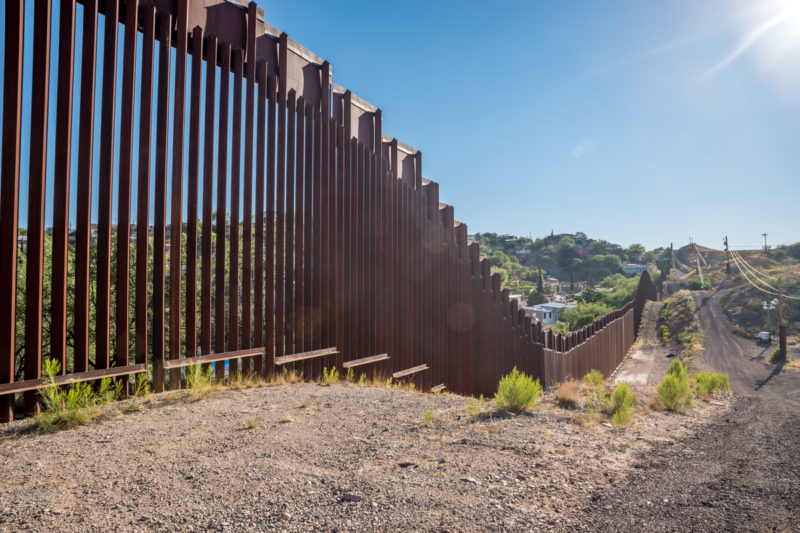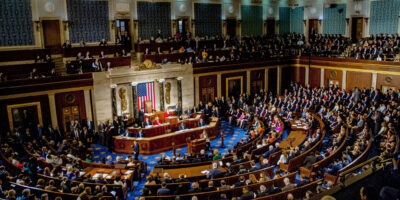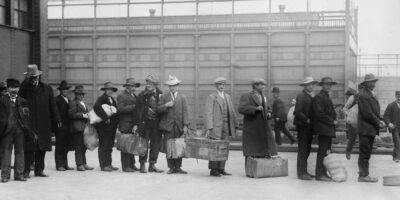The Case for Open Borders Is Stronger than You Think

I’ve long said that I’ve never regretted reading anything by Thomas Sowell. It has always, in my estimation, been time well spent. I would say the same thing about Bryan Caplan: his books — The Myth of the Rational Voter, Selfish Reasons to Have More Kids, and The Case Against Education — synthesize piles and piles of important social science and develop novel insights. His blog posts at EconLog are always insightful. I’m a proud Caplan fanboy: he is the kind of scholar and the kind of person we should all strive to be.
Caplan is also a world-class nerd who embraces his nerddom and uses it to make the world a better place. He’s an aficionado of comic books and graphic novels as well as a passionate and prominent defender of open immigration. In Open Borders, which he wrote with cartoonist Zach Weinersmith (of the always-excellent Saturday Morning Breakfast Cereal), he offers a (literally and figuratively) colorful defense of the best idea in economic development that no one is really trying. As I’ve written in several places, the best thing we could do for the poorest people in the world is to make it easy for them to move to where their labor is worth a lot more and where their standards of living would be much higher.
Open Borders is an attempt at persuasion. On the surface, the case for open borders is simply overwhelming. As a matter of simple justice, it’s not clear why we should prohibit what Robert Nozick called “capitalist acts between consenting adults” just because those consenting adults are on opposite sides of an imaginary line called a border. The economic effects of increased immigration would be simply staggering, as well, with estimates from the economist Michael Clemens suggesting that we can reasonably expect anywhere from a 50 to a 150 percent increase in global output from complete labor market integration. Even if Clemens’s estimates are way off, the worst case of plausible scenarios would still shower us with new riches, which Caplan calls “Niagara Falls economics” as opposed to a mere “trickle-down” (p. 37).
After laying out some basic arguments for open borders, Caplan bends over backwards to address the most plausible objections to his argument. He finds them all wanting. Immigrants aren’t terribly likely to move the political needle, contrary to the fears of those who think immigrants from poor countries will import the institutions that keep those countries poor. They aren’t going to take our jobs or lower our wages. In fact, they will enrich us. They aren’t going to destroy our culture. If anything, they will enrich it (sushi burrito, anyone?). Financially, immigrants are a great deal: even for immigrants who might be net fiscal drains, the productivity effect is far larger than the fiscal effect (p. 77). As Caplan and Weinersmith note, people rejoiced when the Berlin Wall came down because it meant so many people could enjoy freedom and prosperity that had been sorely lacking under communism. They didn’t say, “The Wall needs to stay up lest our precious liberties die at the hands of a communist horde.”
They devote a lot of space to “keyhole solutions” that address people’s fears about immigration. Blanket restrictions on immigration are a draconian solution to small problems that can be addressed with well-targeted interventions. If we are worried about immigrants making bad political choices or bleeding the welfare state dry, we could fix this through the tax code. Perhaps immigrants could have to go through a long probationary period before being allowed to vote or before qualifying for government benefits. Perhaps they could be required to pay an “entry fee” of sorts that could then be redistributed to the people who are inevitably made worse off because of immigration. They hasten to add that none of these keyhole solutions are just or fair, but they are definitely better than the status quo.
Speaking of justice, they argue that immigration restrictions are moral crimes against the least well-off. They invoke a thought experiment by the philosopher Michael Huemer, author of The Problem of Political Authority. Huemer asks us to consider Starving Marvin, who is on his way to buy bread when someone intercepts him and turns him away. This isn’t the store refusing to sell to him. They want to, but someone comes along and puts himself between Starving Marvin and the store. This, according to Huemer (and Caplan), is tantamount to murder.
We should, Caplan thinks, reframe the issue: Immigration is not charity. It is, rather, “justice and abundance.” Given what we know about the economic effects of immigration, they argue, we should dispense with questions like “How many immigrants can we afford to take?” and “Shouldn’t we take care of our own citizens first?” Given the productivity-increasing potential of freer global labor markets, these questions don’t make any sense.
They also assert that all philosophical roads (utilitarianism, libertarianism, egalitarianism, and so on) lead to open borders. Doing the greatest good for the greatest number? Open the borders. Respecting people’s rights to do as they wish so long as they harm no one else? Open the borders. Making the least well-off better off? Open the borders. Maximizing aggregate output? Open the borders. Doing unto others as we would have them do unto us? Open the borders. Not discriminating on the basis of arbitrary criteria? Immigration restrictions require us to discriminate against people on the basis of arbitrary criteria.
Caplan is honest throughout about the fact that he doesn’t see it persuading people to open the borders anytime soon, but he ends on a message of hope: draconian policy under Donald Trump notwithstanding, support for increased immigration has risen over time. One of Caplan’s frequent opponents, Mark Krikorian, has suggested that having him as the face of the open-borders movement would be a godsend to the anti-immigration faction because his loony extremism would discredit immigration enthusiasts.
Borrowing from the Indiana University sociologist Fabio Rojas, Caplan notes that taking open-borders arguments seriously shifts the Overton Window — the range of policies that are being discussed and that just might be possible (pp. 207ff). Open Borders is one step in a marginal revolution, so to speak.
As Caplan puts it, “If I can convince you borders should be 90% or 95% or 99% open, there’s no need to dwell on our lingering disagreements” (p. 143). I couldn’t agree more. Maybe you won’t come away from Open Borders wholly convinced that we should let literally anyone in who wants to move here, but I think you’ll be persuaded that the status quo is moral and economic madness: at the very least, immigration restrictions should be dramatically reduced.








